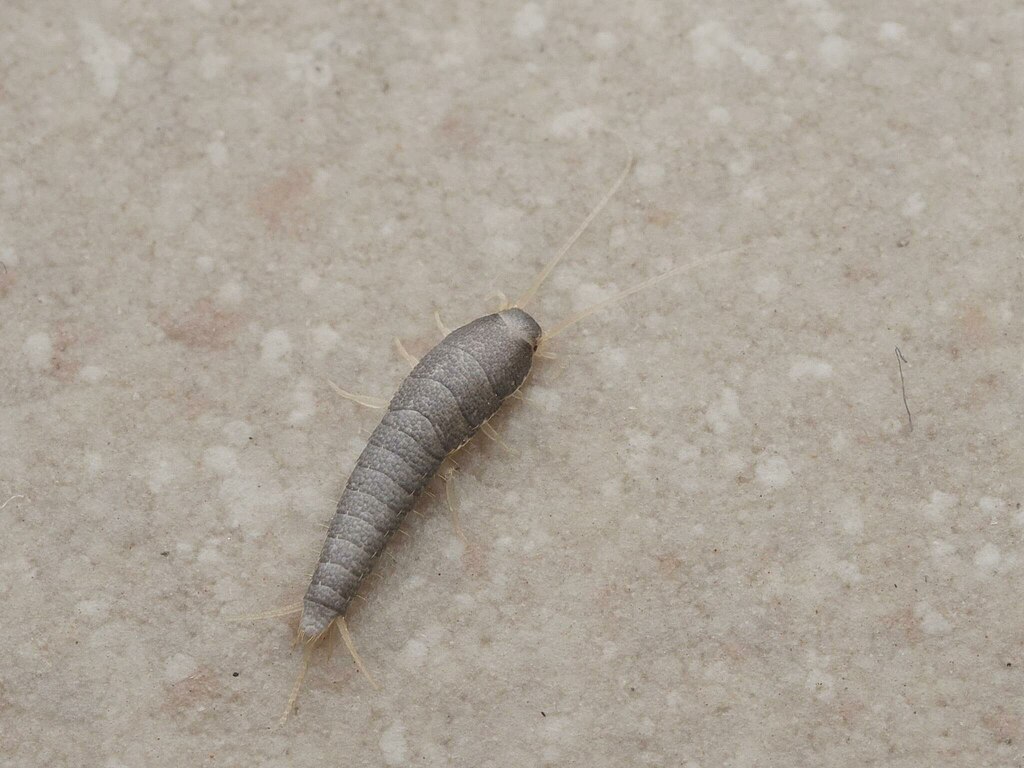Understanding Silverfish Infestations

Introduction
Silverfish pest control is essential for homeowners dealing with these small, wingless insects, scientifically known as Lepisma saccharina. Commonly found in homes, silverfish are named for their silvery appearance and fish-like movements. These pests are slender with a flattened body, thicker near the head and tapering towards the rear. Belonging to the order Thysanura, which includes bristletail insects like firebrats, silverfish have three long appendages called cerci, along with antennae and six legs. Fully grown, they measure around 1/4″ to 1/2″ in length and are often seen darting around bathrooms and kitchens.
Signs of a Silverfish Infestation
Silverfish are nocturnal creatures, meaning they are most active at night, which makes spotting an infestation during the day more difficult. These pests tend to hide in dark, damp areas such as cracks and crevices. Silverfish are drawn to environments with high humidity and moisture, so places like bathrooms, kitchens, basements, and attics are their ideal habitats.
Although they are elusive, you may find evidence of silverfish activity through their damage to household items. Silverfish are known to feed on a variety of materials, including paper, wallpaper, books, and even clothing. They can digest starches, sugars, and proteins, which makes them a threat to anything containing these materials, including food crumbs, glue, and even some fabrics.
If you notice small holes or yellow stains on papers or fabrics, it could indicate the presence of silverfish. You might also spot their distinctive shed skins or small black pepper-like droppings near infested areas.
Prevention and Control
Preventing silverfish infestations begins with reducing the conditions that attract them. Since these pests prefer moisture, controlling humidity levels in your home is critical. Ensure proper ventilation in areas prone to moisture buildup, such as bathrooms, kitchens, and basements. Dehumidifiers and exhaust fans can help maintain low humidity levels. Sealing cracks and crevices around the home also eliminates potential hiding spots for silverfish.
If an infestation has already occurred, professional pest control services can apply targeted treatments to eliminate silverfish. Baits, traps, and residual insecticides are commonly used to address the problem effectively.
By addressing the environmental conditions that encourage silverfish, and with proper pest management, you can keep your home silverfish-free and protect your belongings from their damage. For a comprehensive pest management strategy tailored to your home, reach out to [your company name here] to schedule an inspection today.
Conclusion
Silverfish may not pose direct health risks to humans, but they can be a nuisance and cause damage to household items. Their presence in areas with high moisture is often an indicator of other underlying moisture issues. Early detection and proper humidity control can go a long way in preventing an infestation. If you’re noticing signs of silverfish, it’s time to contact a professional pest control service to assess and manage the situation effectively.
Visit Traffic Pest Solutions homepage to learn more about our comprehensive pest control services, designed to keep your home safe and pest-free.
For more information on silverfish check out University of California’s section on them here.
FAQ
What are the signs of a silverfish infestation in my home?
- This question helps people searching for specific signs of silverfish, focusing on damage to items like paper, fabrics, and noticing their nocturnal activity.
How do I prevent silverfish from entering my bathroom or kitchen?
- This focuses on the popular query of preventing silverfish in moisture-prone areas, tapping into tips like controlling humidity and sealing cracks.
Why do silverfish thrive in humid environments like basements and bathrooms?
- This question addresses the environment silverfish prefer, offering advice on how to make your home less attractive to these pests.
Are silverfish harmful to humans or pets?
- A common concern is whether silverfish pose health risks, so this question targets people searching for potential dangers from silverfish.
What is the most effective way to get rid of silverfish for good?
- This tackles the general query of removal methods, focusing on professional pest control and preventive measures to eliminate silverfish.
